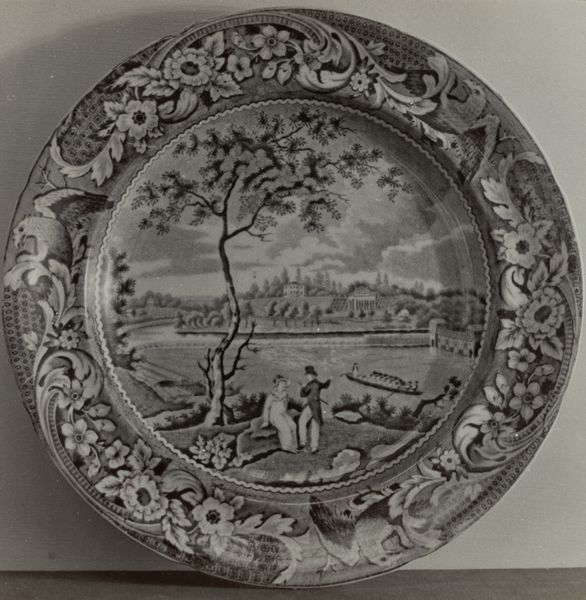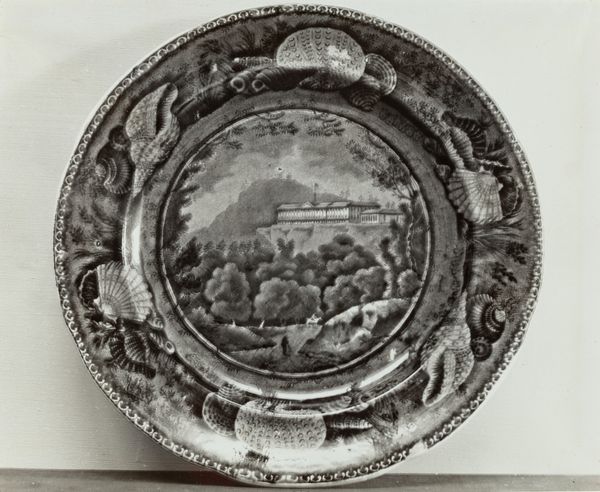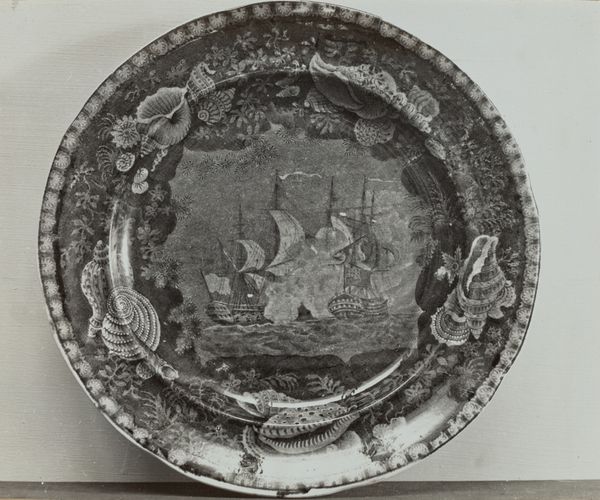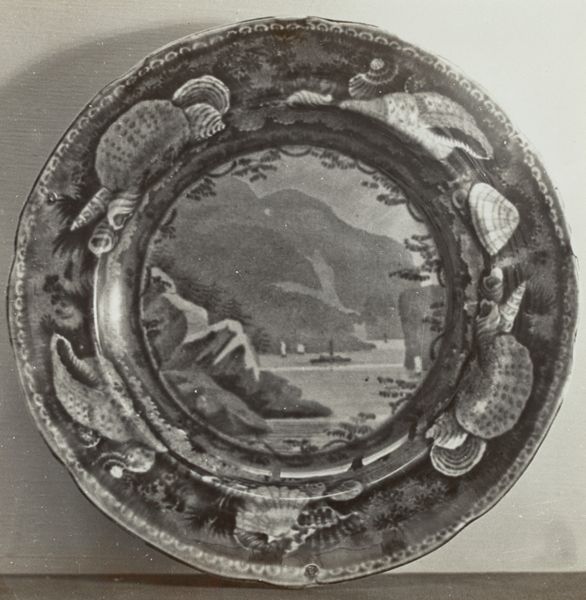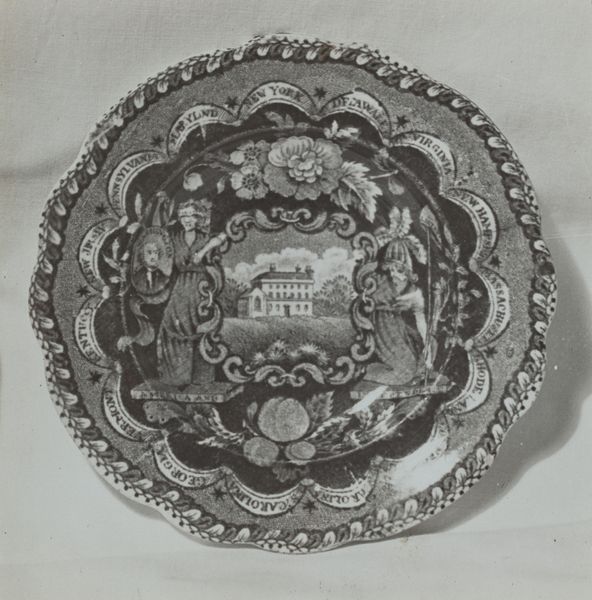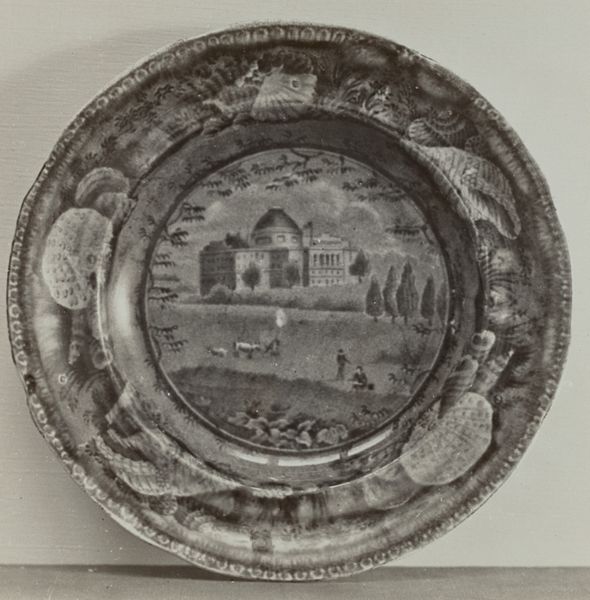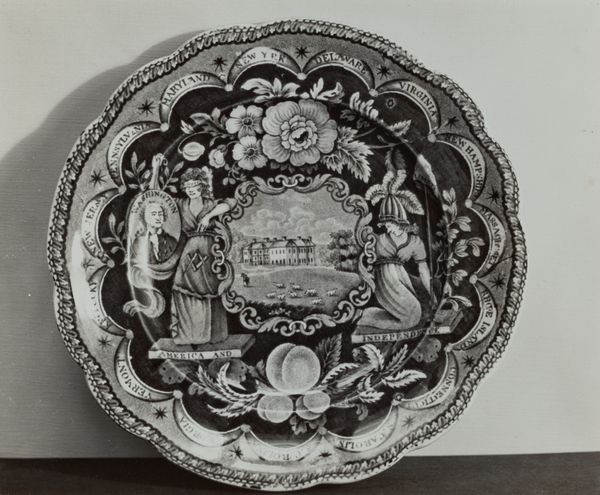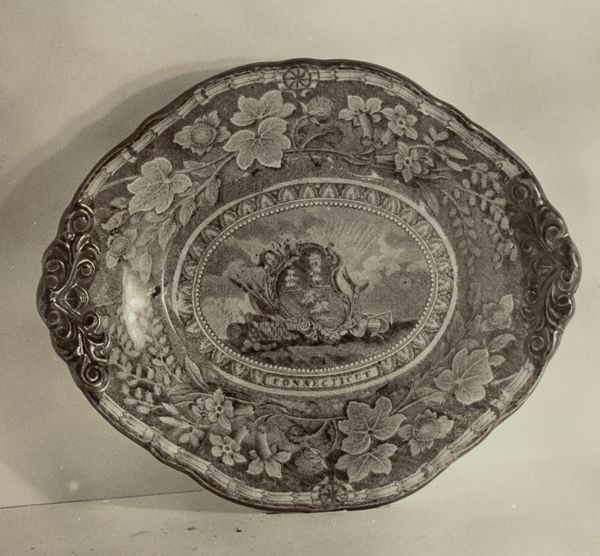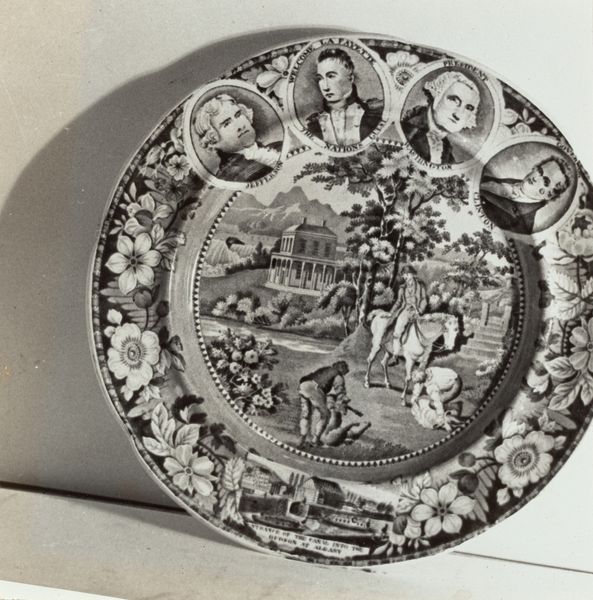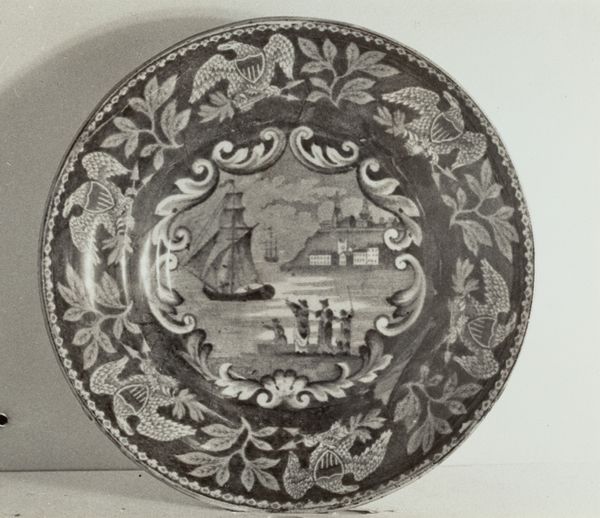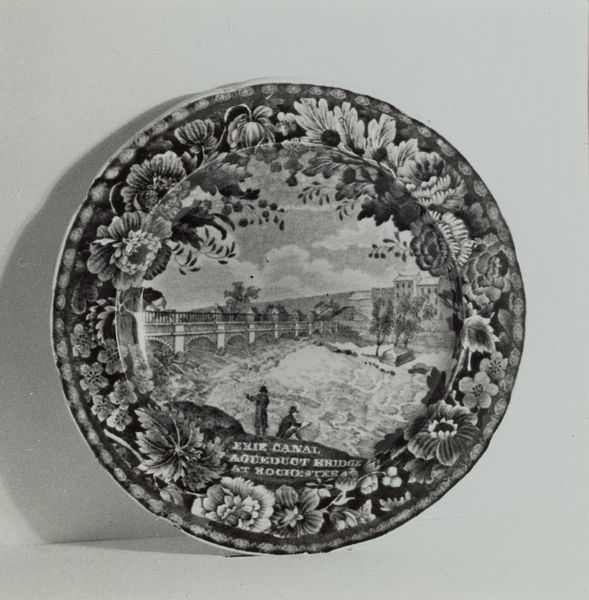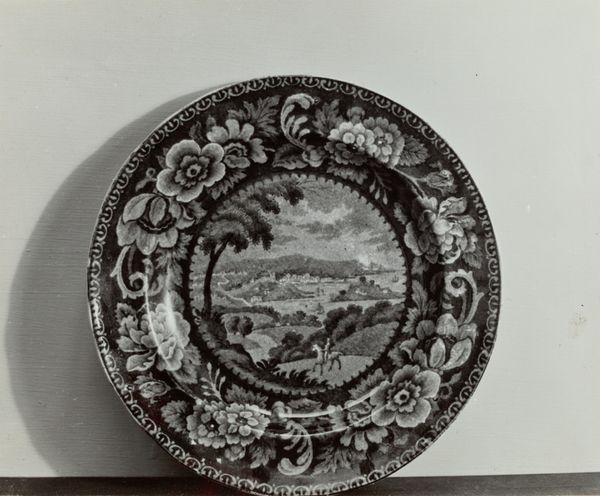
drawing, ceramic
#
drawing
#
landscape
#
ceramic
Dimensions: overall: 20.3 x 25.4 cm (8 x 10 in.) Original IAD Object: 10 1/4" in diameter
Copyright: National Gallery of Art: CC0 1.0
Editor: Here we have a ceramic plate, created around 1936, with a landscape drawing. There's a certain formality to it; the scene is very structured with the path and building. What can you tell me about this plate? Curator: Considering it's a mass-produced ceramic item, this ‘Plate’ immediately disrupts the traditional art hierarchy. It asks us to consider its production - was this design hand-painted, printed, or transferred? That labour and its intended purpose shifts our understanding from pure aesthetic enjoyment to practical usage and economic value within the household. What materials went into its construction and were they locally sourced, or a sign of wider trade routes and global economies? Editor: That’s a perspective I hadn’t considered. I was stuck on thinking about the idyllic scene depicted. Curator: Yes, the landscape itself invites inquiry into its intended audience. What social narratives does it reflect? It seems pastoral and picturesque, a deliberate evocation of romantic notions of rural life perhaps divorced from the realities of the Depression-era America in which it was made. Editor: So, it’s less about the castle and more about the idea of accessible art for the masses? Curator: Precisely. And that accessibility highlights important questions about the circulation and consumption of images, as well as social status and how it’s signaled. Who would have bought this? What did it mean for them to own this object? And in what way does something as mundane as a plate still function as an object invested with social meaning? Editor: I'm starting to see this plate as more than just a pretty landscape, thinking about the manufacturing and the potential social messages. Curator: Exactly. By focusing on its material existence and how it came into being, we move beyond conventional readings of art to consider it as a product of its time, embedded in larger networks of production, consumption, and social life.
Comments
No comments
Be the first to comment and join the conversation on the ultimate creative platform.
